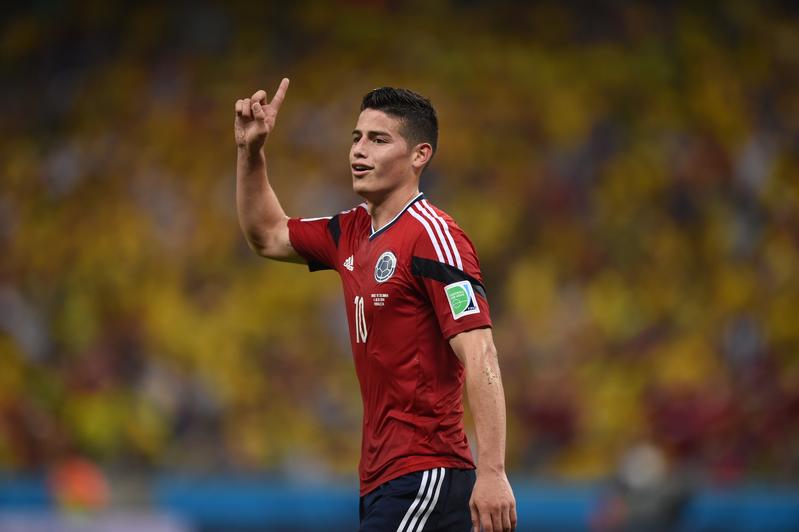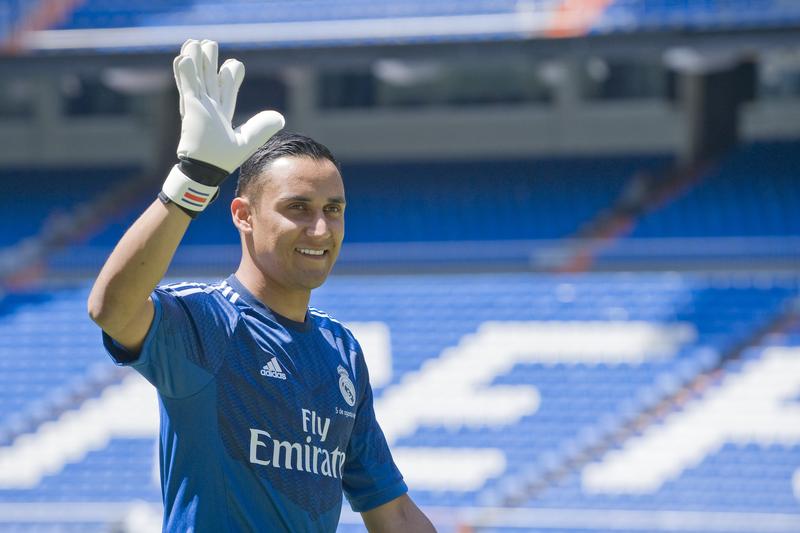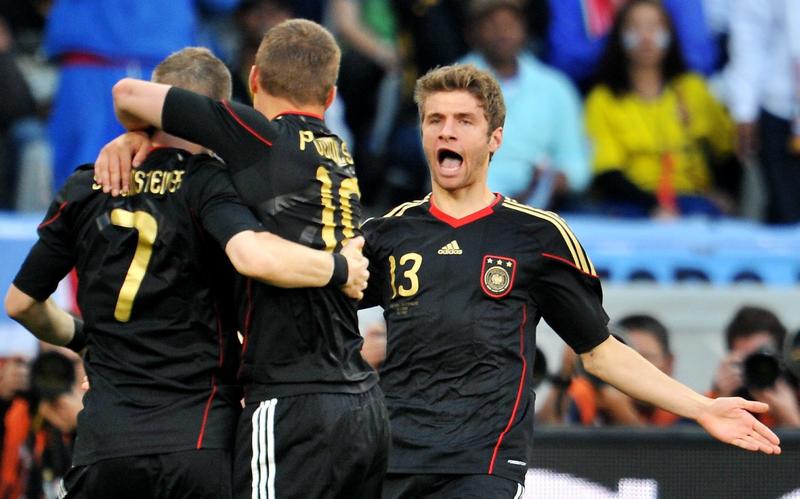 James Rodriguez of Colombia celebrates after scoring a penalty goal during the FIFA World Cup 2014 quarterfinal match soccer between Brazil and Colombia at the Estadio Castelao in Fortaleza, Brazil, July 04, 2014. Brazil won the match 2-1. (MARIUS BECKER / DPA)
James Rodriguez of Colombia celebrates after scoring a penalty goal during the FIFA World Cup 2014 quarterfinal match soccer between Brazil and Colombia at the Estadio Castelao in Fortaleza, Brazil, July 04, 2014. Brazil won the match 2-1. (MARIUS BECKER / DPA)
BUENOS AIRES – What do James Rodriguez, Keylor Navas, Thomas Mueller, Sergio Goycochea, Roger Milla and Salvatore Schillaci all have in common? They are from different generations and different backgrounds, but they all attained global fame by playing a great World Cup.
A World Cup can mess up a player’s career, but it can also make a quality leap possible and become a springboard to the football elite and to the sport’s history books.
Before Brazil 2014, James Rodriguez was a promising player. Then at Monaco, he was already shining with Colombia but was far from being a star. The World Cup emerged as the perfect opportunity. With Radamel Falcao absent due to injury, Rodriguez led Colombia to the tournament’s quarter-finals, their best-ever World Cup performance.
The midfielder, then 22, took charge his team, scored beautiful goals and was also the tournament’s top scorer.
ALSO READ: 10 players to watch in Russia 2018 World Cup
"They told me I was a good player, and the truth is it makes me happy to have so many stars hugging me," Rodriguez told Colombian television after reaping praise from Brazilian players following Colombia’s quarter-finals defeat against the hosts.
Following that performance, Real Madrid paid 80 million euros for his services. With the Spanish giants, he won La Liga once and the Champions League twice.
Three seasons later, he joined Bayern Munich on a loan and earned a place in the Bavarian club’s starting line-up. Not many players have worn both Real Madrid’s and Bayern Munich’s shirts, and Rodriguez might not have got that far without his stunning World Cup.
Something similar happened to Costa Rica’s Keylor Navas, who arrived in Brazil 2014 as Levante’s keeper. He was one of the stars of the Central American side, who reached the quarter-finals and bowed out of the tournament unbeaten, only losing to the Netherlands in the penalty shootout.
 Costa Rican goalkeeper Keylor Navas waves during his presentation as new player of Real Madrid at Santiago Bernabeu stadium in Madrid, Spain, August 05, 2014. Navas was one of the stars of Costa Rica during the 2014 World Cup, who reached the quarterfinals and bowed out of the tournament unbeaten, only losing to the Netherlands in the penalty shootout. (PHOTO / DPA)
Costa Rican goalkeeper Keylor Navas waves during his presentation as new player of Real Madrid at Santiago Bernabeu stadium in Madrid, Spain, August 05, 2014. Navas was one of the stars of Costa Rica during the 2014 World Cup, who reached the quarterfinals and bowed out of the tournament unbeaten, only losing to the Netherlands in the penalty shootout. (PHOTO / DPA)
In the round of 16, Navas managed several outstanding saves against Greece, including one in the penalty shootout that led Costa Rica the furthest they have ever got at a World Cup.
"We need to be more than proud of what we have achieved," the keeper said. "I am thankful for the people who value my work and encourage me."
Navas’ fantastic World Cup performance also attracted Real Madrid’s attention, and they proceeded to sign the man who conceded the fewest goals in Brazil 2014. Four years later, some continue to question his status as Real Madrid’s starting keeper, but he has the trust of manager Zinedine Zidane. Three Champions League finals in succession are no minor feat. For Navas too, the World Cup was a crucial turning point.
Four years earlier, South Africa 2010 did not just crown an unforgettable generation of Spain players who had already won Euro 2008, but it also showed the world players like Germany’s Thomas Mueller. The striker had only made his national team debut a few months before he won the Golden Boot in South Africa.
 Thomas Mueller (right) of Germany celebrates with Bastian Schweinsteiger (left) and Lukas Podolski after scoring a goal during the FIFA World Cup 2010 quarterfinal match between Argentina and Germany at the Green Point Stadium in Cape Town, South Africa, July 03, 2010. Germany won 1-0. (PHOTO / DPA)
Thomas Mueller (right) of Germany celebrates with Bastian Schweinsteiger (left) and Lukas Podolski after scoring a goal during the FIFA World Cup 2010 quarterfinal match between Argentina and Germany at the Green Point Stadium in Cape Town, South Africa, July 03, 2010. Germany won 1-0. (PHOTO / DPA)
Further back, Sergio Goycochea is another case in point. He started Italy 1990 as Nery Pumpido’s substitute with Argentina. However, Pumpido broke his leg in the second group-round game, against the Soviet Union, and "Goyco" played a key role in penalty shootouts against Yugoslavia and Italy.
The 1990 World Cup was also a golden opportunity for Cameroon’s Roger Milla. He had already retired but unexpectedly returned to the sport to play the tournament, at the age of 38. The veteran striker surprised many with several important goals, coming in off the bench in the second half of Cameroon’s games. It is because of that World Cup that he is still remembered.
The same thing happened to another striker, Salvatore Schillaci, in Italy 1990. The Palermo native, who was expected to be a substitute with the "Azzurri," ended up as the tournament’s top scorer.


